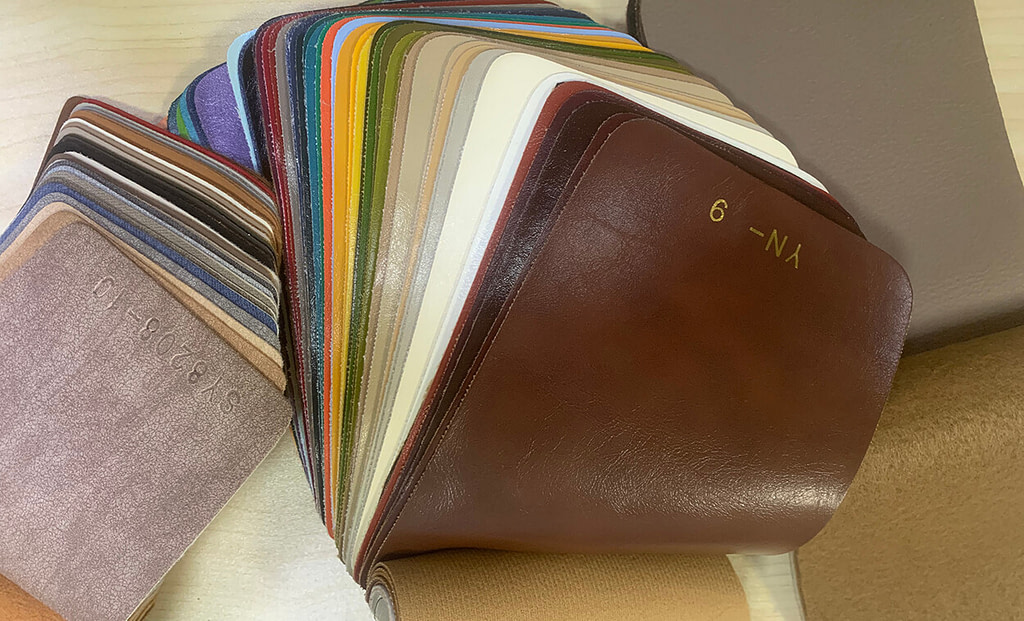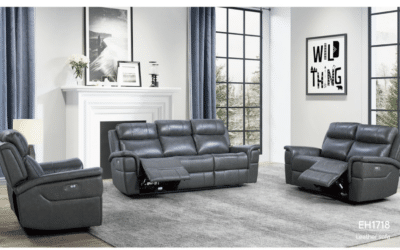PU leather, often known as synthetic leather, is a faux leather replica made from polyurethane.
Polyurethane is a material with a similar texture and appearance to leather but without the use of animals.
100% PU leather is a synthetic material or artificial leather that does not require the use of animals. PU leather is famously known as vegan leather.
When shopping for leather goods, it may be difficult to tell the difference between genuine leather and synthetic leather.
Some individuals like real leather, while others prefer fake leather since it is less expensive.
Leather is a great fabric for upholstery furniture, with the foundation material lasting up to 5 years longer than any other fabric. However, genuine leather may be quite expensive.
They’re a little expensive.
As a result, fake leather and polyurethane (PU) was developed and became an alternative fabric for buyers seeking leather.
There are differences between PU leather and real leather. It can be difficult to identify without the proper information to distinguish both.

1. What is PU Leather?
PU leather, often known as polyurethane leather, is a synthetic leather composed of thermoplastic polymer that is used to make furniture or shoes.
The material used was man-made to mimic the exquisite appearance and feel of real leather obtained from animal skin.
It may seem embossed at times with a textured appearance, is water-resistant, and is simple to clean and maintain. As a result, it provides excellent value at a cheap cost.
The smoothness and appearance of both kinds of leather may deceive you; they seem just like genuine leather.
Many products sourcing companies have already stocked up PU leather has it grown its popularity over the last several years. Pu leather is essentially a man-made leather substitute.
Pu leather is much superior to animal leather in terms of ethical considerations alone.
Although a lot of chemicals are utilized during the production process of the leather, it is also more ecological than cows leather.
It smells very synthetic and unpleasant, however, the repulsive scent fades shortly.
How to identify PU Leather?
It is important to know how to identify the difference between PU leather and real leather, depending on whether you are searching for PU leather or genuine leather.
If you’re seeking to purchase leather furniture, the simplest method to identify the difference is to glance at the tag. Because certain goods may not have a tag, knowing the differences will be helpful.
The primary difference is the price. PU leather is less expensive than real leather. So might as well do a quick price comparison to know if it is PU or real leather. PU leather will have a distinctive odor. Real leather does not have a plastic or chemical odor, while PU does.
A water test may also be used to detect if the leather is genuine or fake.
Although it is not advisable to do a water test on a product that you do not own, real leather will absorb the water. Water will not be absorbed by PU leather.
If you want to test it onsite, you can ask your sourcing company if they can provide a testing sample material for you to verify its quality.
You may be able to detect the difference simply by glancing at the material if you have a sharp eye.
Genuine leather will have some flaws and a natural texture. PU leather will seem to be artificial, with a nearly flawless, patterned texture.
2. What is Real Leather?
Genuine leather is made from animal skin, in this instance cowhide, and must be dyed in order to prevent degradation and become useable leather.
It has a lengthy shelf life and develops a beautiful texture as it ages. An accessory constructed of this material may endure between 10 and 20 years if properly maintained.
Genuine leather is difficult to rip or puncture, and it is also far more breathable and moisture than most synthetic leathers, which may crack and distort in a matter of years.
Furthermore, unlike synthetic leather, certain real leathers are hypoallergenic, which means they resist specific allergies.
Leather care is a bit more difficult than PU leather maintenance.
Leather may be cleaned with soap or water and a wet towel, but if it becomes soiled with oil or sweat, a professional leather cleaning is required.
Genuine leather may need the use of a leather conditioner from time to time to maintain it supple; otherwise, it may become stiff or brittle.
This is due to the natural oils found in leather drying out over time.
Characteristics of Real Leather
Heat insulator
One of the primary reasons why leather is so comfortable against the skin is because of its excellent insulation properties.
The rate at which heat passes through a material is measured as heat insulation.
Because leather contains a large amount of air, heat moves through the material at a glacial pace.
Breathability
Breathability allows moisture and air to pass through the leather.
Waterproof leathers that are designed to be breathable while also offering security from wet conditions will deliver outstanding overall performance.
Thick quality
Skins provide thin leathers with exceptional suppleness that may be used for bookbinding, gloves, lining, and clothing.
Cow leather has a wide range of thicknesses because it may be divided into layers.
Leathers that have been split thin may be utilized for clothing, gloves, and leather products.
Medium thickness leathers, on the other hand, are more often used for upholstery, automobile components, shoes, bags, and leather goods, while thick leathers are utilized for footwear soles and crafts.
Click this video to know the distinct difference between the two leather materials.
3. FAQ
Does PU leather peel?
The most popular method of producing PU leather is to combine split leather with polyurethane before pasting it onto a surface.
As a result, PU leather will begin to peel over time. A close inspection of the edges will reveal the glued portions that will begin to peel after some usage.
Is PU leather vegan material?
Because PU leather is really a mix of several artificial elements, it is completely vegan in its natural condition.
It is often confused with the known split leather.
Split leather is made from the byproducts of traditional leather manufacturing and is coated with polyurethane.
This makes it a hybrid of genuine and PU leather, although it’s more often referred to as PU leather than split leather.
As a result, it’s always a good idea to inquire or check the label to see whether the goods are really made of PU leather or simply a covering.
Ethically, this makes a significant difference for those who shun animal products and do not want to contribute to the death and suffering of animals as a result of leather manufacturing.
Is PU leather as good as real leather?
Nothing beats genuine leather. Although they are similar, PU leather and real leather vary in texture and price.
Because of the way it is made, PU leather is less coarse and stiff than genuine leather.
This distinguishes it from genuine leather, and although it is excellent, it is not as good as genuine leather.
Bottomline
If you’re searching for a less expensive alternative, something vegan, or something that comes in a range of colors, PU leather is a wonderful choice.
However, if you are searching for real leather, you should avoid PU leather.
To assist you in your furniture purchasing process, there are many methods to identify the difference between PU leather and real leather.








0 Comments